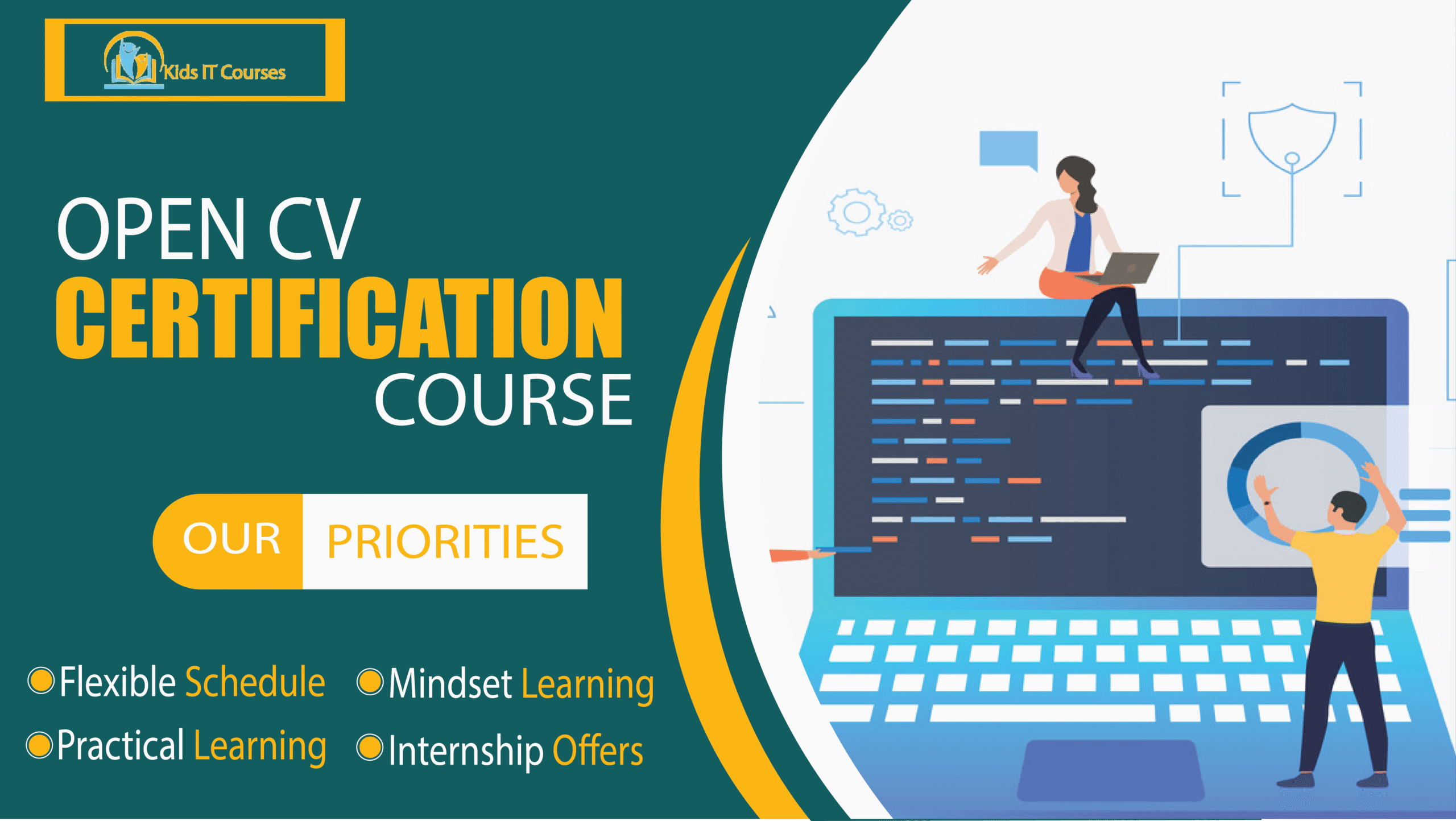
Open CV Course for Kids
Definition
◦ Kids learn how computers can look at pictures and videos. It’s called “computer vision,” and OpenCV helps do it.
◦ They try cool projects like face detection and object tracking. It makes learning feel like magic!
◦ Kids understand how to break tasks into small steps. It helps their brain grow sharp and focused.
◦ They write basic code using Python and OpenCV. It’s a fun way to learn programming with visuals.
◦Projects feel like puzzles or video games. This keeps kids excited and involved.
◦ They design their own fun ideas and share with others. This builds teamwork and imagination.
◦ Computer vision is used in robots, apps, and self-driving cars. Learning OpenCV gives kids a head start in future tech fields.
Importance
◦Kids learn how computers can recognize faces, shapes, and objects. It’s like giving eyes to machines!
◦ They explore how photos and videos can be changed using coding. It makes learning fun and visual.
◦ They fix bugs and improve results using logic and testing. This helps their brain grow sharper.
◦ Kids can use OpenCV in game design or fun projects. It brings creativity and coding together.
◦ They use beginner-friendly tools and code to work with real tech. This builds confidence in modern skills.
◦ Computer vision is used in robotics, security, and AI. Learning it early opens exciting future paths!
Advantages for Open CV
◦ Kids learn how computers can look at pictures and videos. It’s like giving eyes to machines!
◦ They explore how robots and apps can recognize faces, shapes, or colors. It feels like magic—but they make it happen!
◦ Working with OpenCV helps kids think step-by-step. They learn to break problems into small, smart parts.
◦ They create fun projects like motion games or drawing with a webcam. It mixes play with learning.
◦ Kids use simple code to make computers react to images. This gives them hands-on practice with real-world technology.
◦ OpenCV is used in robots, self-driving cars, and smart apps. Learning it early gives kids a big jump into the future!
Module 1: What is OpenCV & Computer Vision?
What is OpenCV?
How computers “see” images
Real-life uses (face filters, object tracking, robots)
Fun examples: Instagram filters, motion sensors
Module 2: Images as Data
What is a pixel?
Color models: RGB, grayscale
Read and display images with OpenCV
Activity: Show and edit your favorite image in Python
Module 3: Image Processing Basics
Resize, rotate, crop images
Convert to grayscale
Draw shapes and text
Mini project: Add fun effects to a photo
Module 4: Filters & Effects
Apply blur, sharpen, edge detection
Make a cartoon-style image
Real-world example: Snapchat filters
Experiment: Try filters on a selfie or pet picture
Module 5: Face Detection with OpenCV
Use Haar Cascade to detect faces
Draw rectangles around faces in an image
Add emojis or hats to faces
Discussion: How is this used in real life?
Module 6: Motion Detection
Capture video from webcam
Detect moving objects
Create motion alert system
Fun idea: Motion-activated dancing robot graphic
Module 7: Object Tracking & Colors
Detect specific colors (e.g., red ball, blue pen)
Track and draw motion trails
Mini challenge: Create a color-controlled paint app
Learn about color range and masking
Module 8: Final Project – Smart Vision App
Combine filters, face detection, and drawing
Ideas: AI mirror, virtual makeup, motion art
Present your app to friends/family
Get certified as “Young Vision Coder”
Bonus Materials
Kid-friendly folders of faces, animals, and objects for experimentation
Simple definitions of OpenCV terms (pixel, grayscale, mask, frame)
Starter code for filters, motion detection, face tracking
Kids design their dream photo filter on paper before coding
Editable certificate to award creativity and course completion
